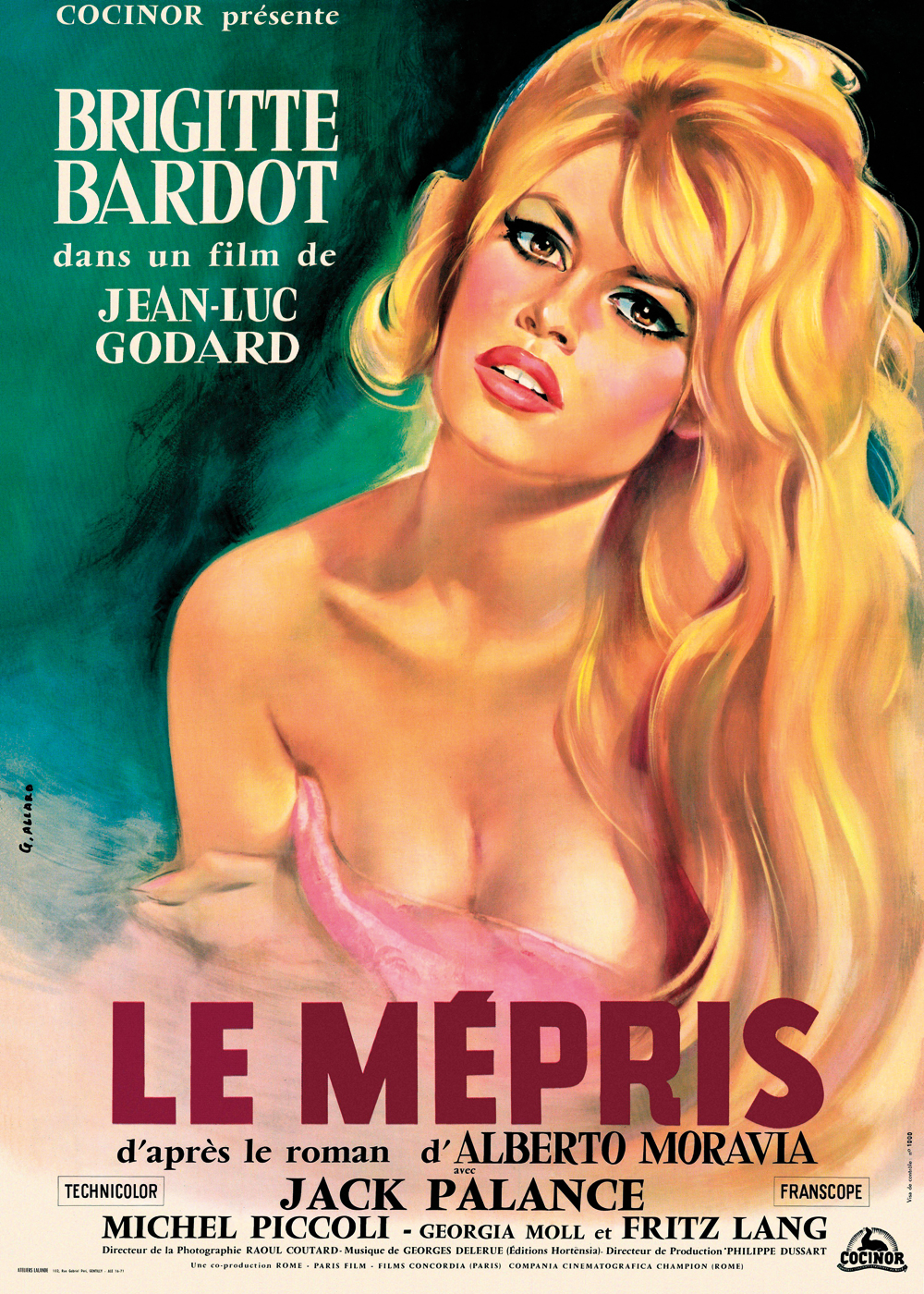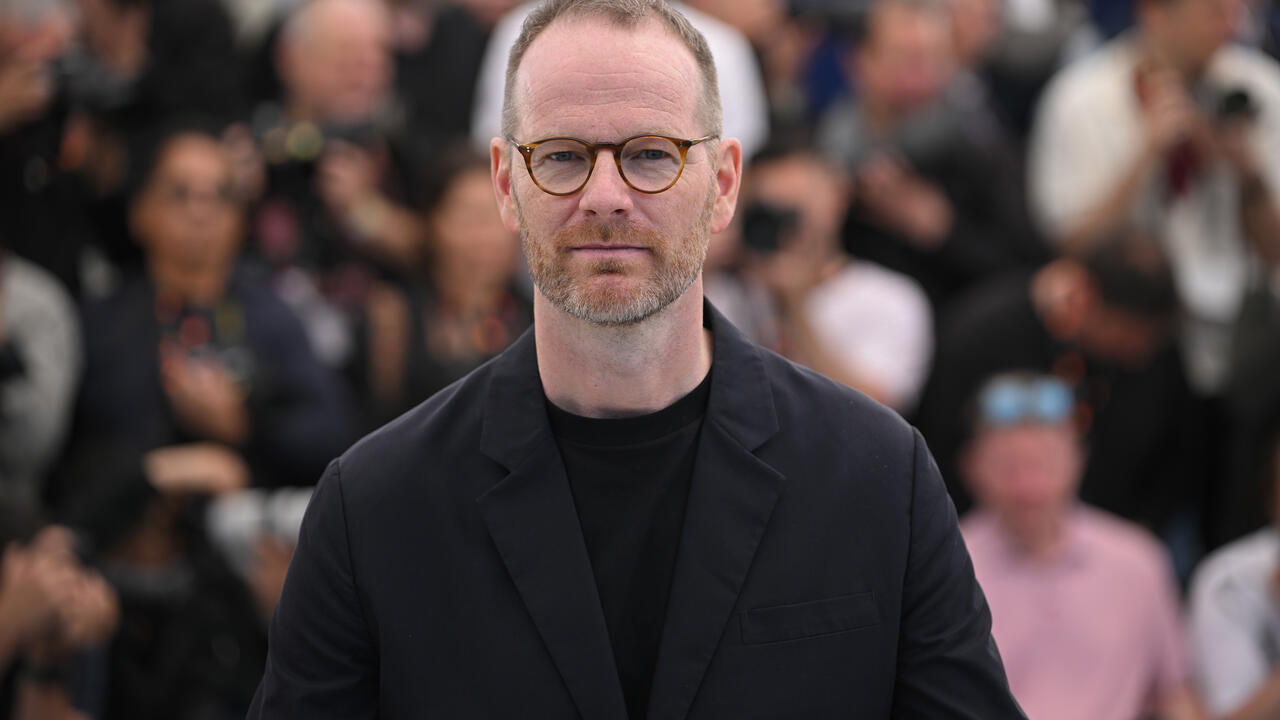Life in Film
The British artist discusses the films that have influenced him
The British artist discusses the films that have influenced him

On a recent day in Los Angeles, in glorious sunshine, I was walking along the streets near Venice Beach when I came across a young figure in wet swimming trunks getting on a bicycle; he had a special bracket to carry his surfboard. H.G. Wells famously declared: ‘Every time I see an adult on a bicycle, I no longer despair for the future of the human race.’ I knew what he meant. What a delightful image of civilization it is – especially when the cyclist has a surfboard.
However, I soon noticed a dope with a video camera filming the departing surfer-cyclist and felt my lip curl. In that moment, I enlarged Wells’s category and despaired both for the human race and video. The world is full of footage that nobody is ever going to watch. Capturing it makes people happy, but watching it can be tiresome. Shooting video seems to give millions of people something to do with their hands; in a sense, it’s replaced smoking. The result is reams of footage that is not particularly important or edited: this very lack of attention evaporates its status. And what exactly is the standing of video when one group show alone can offer 22 hours of it? Does it matter if you watch five seconds or five hours?
Obviously, as a video artist, I believe that the medium is very special. At its most complex, it brings together time, colour, form, light, rhythm, ideas, narrative, character and place; done well, it’s seductive, rapturous even, and can totally envelop the viewer. But that apogee takes skill: a combination of ideas, directing and editing. So, I hope you’ll cut me some slack when I say I feel exhausted by video’s presence everywhere – whether it’s people walking around filming everything they do or, in the art world, its descent into unedited rushes or installation flavour-enhancer.
Let’s be frank: you can’t honestly call installing a show in California ‘work’. It’s a wonderful feeling to have an exhibition in a sunny place. During my time there, far from my home in the UK, my thoughts began to stray. The sight of the cycling figure in wet trunks reminded me of myself. I had an odd childhood. My parents had decided that Britain was dowdy, so they moved from the UK to Egypt (my mother ran a cinema in Cairo when she was 20), then to Iraq and Iran. Finally, by the time I was born, my family had settled in Georgetown, Guyana. My father worked for Bookers, the sugar company of literary-prize fame. I grew up swimming every day and, when not at school, I had a very free childhood. From the age of six, I was allowed to walk around the city on my own. I spent hours sitting on sacks of flour in a Chinese bakery, hanging out with people in rum shops, looking at the cages of macaws in the market or visiting the cinema. Somebody taught me how to make kites. You could tie one to the sea wall, go swimming and watch it fly.
That is my true ‘life in film’: my time in Guyana is at the heart of my formation as an artist and, although I have listed here my filmic influences, they are perhaps predictable when set against the unique colours, culture and freedom that I experienced growing up in the West Indies. My childhood stays with me in a filmic way and I am sure it attracted me to the moving image: its sensory range is the most able to replicate other worlds. Other key players in my cinematic imagination are Jean-Luc Godard and Alain Resnais, both of whom filmically built on an inheritance from Marcel Proust, not via realism but by attempting to represent the mind’s interior. Slogans, repetition, fragments of memories and breaks in film grammar mirror the jumpy mind. The struggle between reality and cinema mimics the viewer’s struggle between concrete reality and feelings. Both directors celebrate that nothing is quite as it seems; things can be filmed one way but, by means of a voice-over, can be made to allude to something quite different. Resnais’s L’Année dernière à Marienbad (Last Year at Marienbad, 1961) inspired me when I saw it in London at the St Martin’s film club in 1978 (it’s pretty glamorous, too). Godard’s Le Mepris (Contempt, 1963) and Deux ou trois choses que je sais d’elle (Two or Three Things I Know About Her, 1967) have been lifetime favourites in that they have a huge, tragic scope; like great literature, these films attempt to discover something universal in individual stories. In fact, I consider both Resnais and Godard to be novelists making films.
I did a course on avant-garde film at the British Film Institute in 1980 and studied the classics – Italian neorealism, feminist filmmaking, gritty British ‘kitchen sink’ dramas – all of which emphasized the importance of good writing and editing. Visual sequences, like sentences, must be driving something.

I’ve always felt any idiot can be serious – one has only to look at management in British higher education to see that – but the world never quite understands how hard it is to be funny or how necessary humour is. So, I would also like to cast my vote for a few of the most insouciantly joyous films ever made, both starring Will Ferrell: Blades of Glory (2007) and Elf (2003).
In Guyana, there was no television but we had wonderful gramophone recordings from the 1930s of Oscar Wilde’s The Importance of Being Earnest (1895), the comedy duo Flanders & Swann, Bob Newhart’s stand-up, and character-driven monologues by the massively talented Ruth Draper. Again, these are all humorous and perhaps inculcated a sense in me that, even within the tragic, one needs an opposing register; art has to keep surprising, it can’t just sit in one place. My penchant for monologues – such as in my recent film, Basement Pool (2015) – is an homage to these early influences.
Anyway, after seeing this man on a bicycle with a surfboard attached, I felt my whole body jerk. Like a wormhole in space, I travelled thousands of miles in an instant to where I once was as a boy; sensations abounded with memories of my youth in Guyana and – experiencing an elevated, day-release frame of mind in California – I wanted to interpret it as a ‘sign’. Had I found God? Had I found my inner Californian?
We all occasionally need to take stock of our memories and influences, and the process of arraying them across our internal Final Cut Pro timeline helps us make sense of our lives. But it doesn’t always work like that; memories are slippery and open-ended, like language or film itself, and all discourses that attempt to grasp reality are, to some degree, a fabrication. Yet, seeing the cyclist-surfer for an intense Proustian moment in California transported me home to Guyana, and I can’t tell you how much I’ve missed it. Time stopped: time present was also time past. I was home.
I wonder whether the Proustian joy of involuntary memory would be spoilt if you knew you had the footage somewhere in that cobwebby, Gaston Bachelard-inspired place we call Google Drive? In a culture inundated with recording, is the pleasure of remembering being damaged?
In grief, we have no argument with anybody; all the trivial irritations of life seem meaningless. It’s much the same when powerful memories strike; the remembered is a world only one person can know. The interior/exterior, conscious/unconscious quality of our minds is brought to the forefront. We know our private theatre will go dark when we die; perhaps the unexpected memory, like the jolt I had seeing the cyclist-surfer that day, is simply the way we visit ourselves – coming to say goodbye.






















